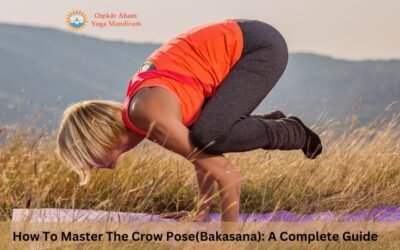As a yoga practitioner, mastering the Garland pose or Malasana can be challenging, but it’s one of the most rewarding and beneficial postures you can learn. Not only does it stretch the hips, groin, and ankles, but it also strengthens the lower back and core muscles, improves digestion, and helps release tension and stress.
If you’re planning to join a 100-Hour Yoga Teacher Training in Rishikesh, India, then you’ll likely encounter the Garland pose or Malasana, as it’s a foundational posture in most yoga styles. In this article, we’ll explore the benefits and variations of this posture, as well as some tips and tricks to help you master it.
What Is Garland Pose Or Malasana?
Garland pose or Malasana is a squatting position that resembles the shape of a garland, hence its name. To perform this posture, begin by standing with your feet shoulder-width apart, then bend your knees and lower your hips down towards the floor. Bring your hands to the centre of your chest, and press your elbows against your inner thighs to create resistance. You can also use blocks or blankets under your heels if you have trouble keeping your heels on the ground.
Benefits Of Garland Pose Or Malasana

Garland Pose
Garland pose or Malasana has numerous physical, mental, and energetic benefits, including:
- Stretches the hips, groin, and ankles
- Strengthens the lower back and core muscles
- Stimulates the digestive system and improves metabolism
- Relieves tension and stress in the hips and lower back
- Helps improve posture and balance
- Activates the Muladhara or root chakra, promoting a sense of grounding and stability.
Variations Of Garland Pose Or Malasana
There are many variations of the Garland pose or Malasana that you can explore, depending on your level of flexibility and strength. Some of the most common variations include:
- Half Garland pose or Ardha Malasana – This variation involves performing the Garland pose but with one leg extended straight out in front of you.
- Bound Garland poses or Baddha Malasana – In this variation, you bring your hands behind your back and clasp them together, then lower down into the Garland pose.
- Twisted Garland pose or Parivrtta Malasana – This variation involves twisting your torso to one side while in the Garland pose, then repeating on the other side.
Tips For Mastering Garland Pose Or Malasana
- Warm up your hips and ankles with some gentle stretches before attempting the Garland pose.
- Use props such as blocks or blankets to help support your body and deepen the pose.
- Engage your core muscles and keep your spine straight to avoid straining your lower back.
- Focus on your breath and try to stay present and mindful throughout the posture.
- Practice regularly and be patient with your progress, as it can take time to master this challenging posture.
Conclusion
Garland pose or Malasana is a powerful and transformative posture that can help you develop strength, flexibility, and balance in both body and mind. By joining a 100-Hour Yoga Teacher Training in Rishikesh, you can deepen your practice and gain a deeper understanding of this posture and its many benefits. Remember to be patient, breathe deeply, and enjoy the journey towards mastering this incredible posture.
Join Our Omkar Aham Yoga Mandiram and experience our effective 300-Hour Yoga Teacher Training Rishikesh. For further details, contact us at:
Call/WhatsApp: +91-9997744876
Mail us at: info@yogateachertrainingschool.com




